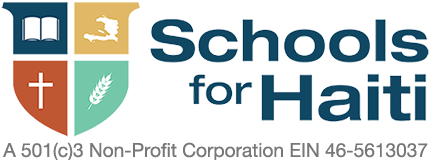Why help Haiti’s children?
The children of Haiti face unimaginable challenges that their American peers cannot fathom. While both groups share the universal dreams of youth, the disparity in their circumstances is staggering.
Haiti is the poorest country in the Americas and the 3rd poorest in the world. Unlike the robust social safety nets in the U.S., Haitian children lack access to critical services like food assistance, healthcare, and housing. Many of the students in our schools come from makeshift homes without electricity, plumbing, or even a reliable source of food.
Yet, in the face of these dire circumstances, these children possess an inspiring resilience. They arrive at our doors smart, happy, polite, and overflowing with gratitude – qualities that bear witness to the immense potential within them.
By providing a quality education, a nourishing daily meal, and the support of our community, we unlock that potential, empowering the next generation of Haitian leaders. Join us in transforming lives and fueling a brighter future, one child at a time.
General Facts about Haiti
Haiti, the poorest country in the Americas, has faced numerous challenges. A devastating earthquake in 2010 struck Port-au-Prince, the capital, causing widespread destruction and claiming over 230,000 lives.
The majority of Haiti’s 10 million people live on less than $3 a day, and many lack access to basic necessities like healthcare and education. The country grapples with significant social issues, including:
- Orphan Crisis: Over 400,000 children have lost their parents.
- Child Mortality: One in five children dies before the age of six.
- Economic Hardship: Roughly three-quarters of the population is unemployed or underemployed, and 75% live in extreme poverty.
These factors contribute to Haiti’s ongoing struggle for stability and prosperity.
Educational Facts about Haiti
Haiti’s education system faces significant challenges:
- Low Enrollment and Completion Rates: Only 57% of children enroll in primary school, and less than 30% reach the 6th grade. Secondary school enrollment is even lower at 20%.
- Low Literacy: Haiti’s literacy rate is a mere 52.9%.
- Underfunded Education: The country ranks 177th out of 186 globally in terms of national education spending.
- Lack of Government Support: Despite the government’s goal of free public education, there is no current funding to implement this.
- Private School Dominance: International private schools, primarily run by foreign missions and churches, educate 90% of students.
